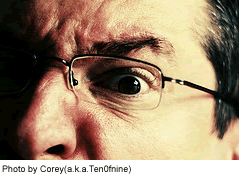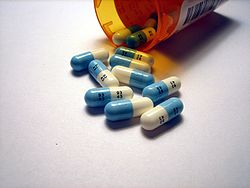
Does advertising influence society, or is it merely a reflection of society’s pre-existing norms? Where male attitudes are concerned, a new study implicates magazine advertisements specifically aimed at men as helping to reinforce a certain set of views on masculinity termed “hyper-masculinity.” The article by Megan Vokey, a Ph.D. candidate from the University of Manitoba, and colleagues is published in Springer’s journal Sex Roles.
Hyper-masculinity is an extreme form of masculine gender ideology comprised of four main components: toughness, violence, dangerousness and calloused attitudes toward women and sex. The authors found that hyper-masculine depictions of men, centered on this cluster of beliefs, appear to be common place in U.S. magazine advertisements.
Using a range of eight, high-circulation magazines marketed to men of different ages, levels of education and income (e.g. Golf Digest to Game Informer), Vokey and her colleagues analyzed the ads in each magazine where a photograph, picture or symbol of a man was shown. The researchers then categorized these advertisements using the four components that constitute hyper-masculinity. They found that at least one of these hyper-masculine attitudes was depicted in 56 percent of the total sample of 527 advertisements. In some magazines, this percentage was as high as 90 percent.
Vokey’s results are consistent with considerable prior research showing a positive association between hyper-masculine beliefs and a host of social and health problems, such as dangerous driving, drug use and violence towards women. Further analysis of the data showed that magazines with the highest proportion of hyper-masculine advertisements were those aimed at younger, less-affluent and less-educated men. The authors argue that this is an area of real concern as young men are still learning appropriate gender behaviors, and their beliefs and attitudes can be subtly shaped by images that the mass media repeatedly represent. In addition, men with lower social and economic power are already more likely to use a facade of toughness and physical violence as methods of gaining power and respect. These advertisements are thought to help reinforce the belief that this is desirable behaviour.
The authors conclude, “The widespread depiction of hyper-masculinity in men’s magazine advertising may be detrimental to both men and society at large. Although theoretically, men as a group can resist the harmful aspects of hyper-masculine images, the effects of such images cannot be escaped completely.” They add that educating advertisers about the potential negative consequences of their advertising may help reduce the use of these stereotypes.
Source: Springer Science+Business Media Vokey M, Tefft B and Tysiaczny C (2013). An analysis of hyper-masculinity in magazine advertisements. Sex Roles; DOI 10.1007/s11199-013-0268-1.



